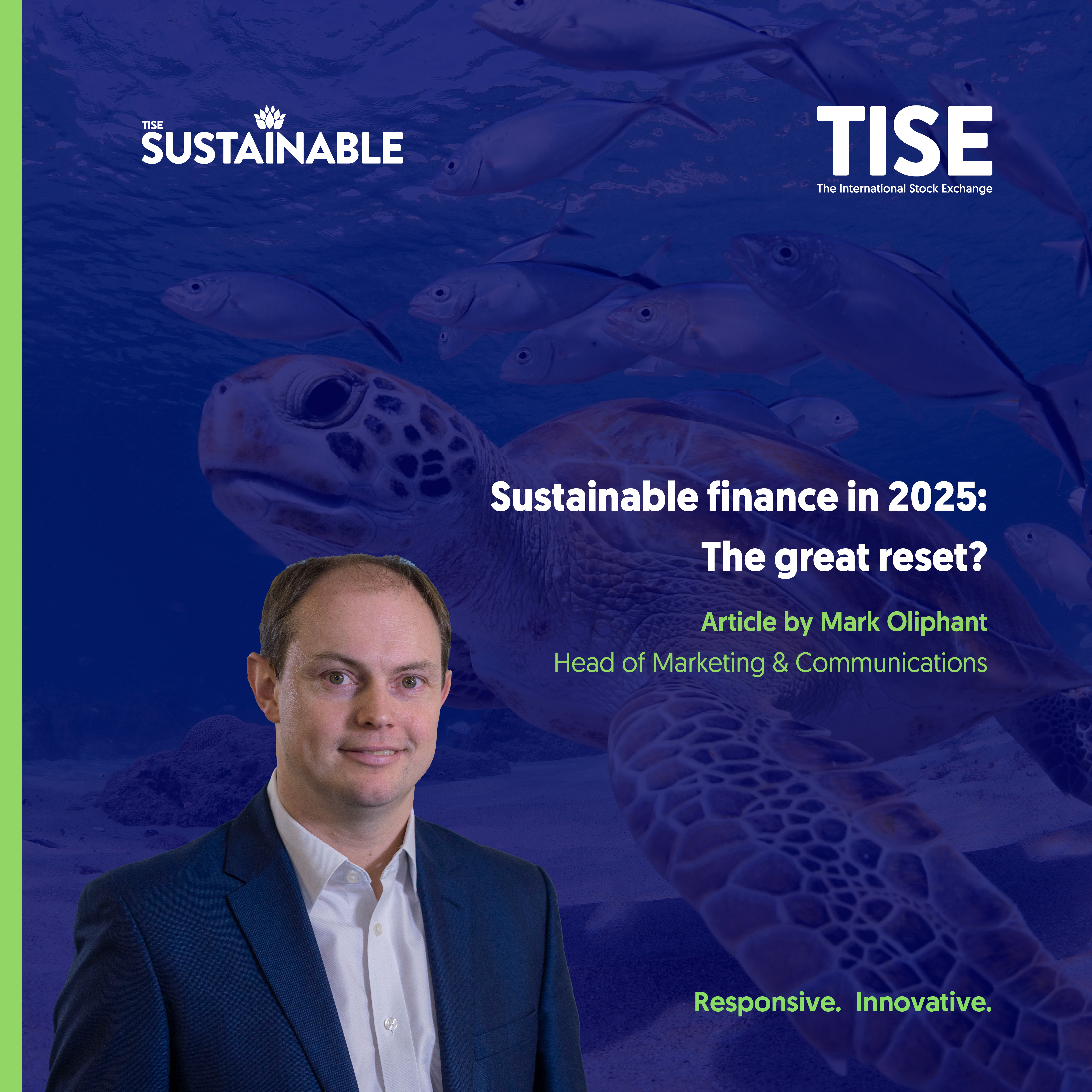Mark Oliphant, Head of Marketing & Communications at The International Stock Exchange (TISE), explores what Donald Trump’s return to the White House means for trends in sustainable finance.
In the last decade there has been an ever-growing focus on sustainable finance, although this has always been much more heightened in the EU and UK compared to the US.
Catalysed by Donald Trump’s return to the White House, it is the US which has predominantly driven a reactionary meta narrative to sustainable investing. Or, at least, it has led a strong aversion to ‘top down’ regulation and legislation.
"...it is the US which has predominantly driven a reactionary meta narrative to sustainable investing."
For example, within the financial services industry, Blackrock, the world’s largest asset manager, has exited the Net Zero Asset Managers Initiative (promoting it to suspend activities), and managers have largely shunned mandatory sustainable fund labelling regimes in the EU and the UK.
At the same time, governments have relaxed initiatives designed to escalate the reduction in carbon emissions by targeted dates, and regulators and legislators have watered down proposals aimed at providing more direction to sustainable finance activities.
Bond markets
Despite this narrative, in 2024 there was record sustainable bond issuance globally of approximately $1 trillion. While data from the likes of Bloomberg and the International Capital Market Association (ICMA) varies slightly, they agree that issuance levels returned to around the levels of 2021 and up markedly from 2022 and 2023.
"...both sovereigns and corporates continue to seek financing for sustainable initiatives, especially through the issuance of green bonds and sustainable bonds..."
This reflects the fact that, while there were still some geo-political uncertainties, the macro-economic picture was much improved in 2024 and provided fertile ground for debt issuances. It also demonstrates that both sovereigns and corporates continue to seek financing for sustainable initiatives, especially through the issuance of green bonds and sustainable bonds, and there is strong investor demand for these opportunities.
TISE trends
The International Stock Exchange (TISE) is widely recognised as a leading European bond market. There are over 4,500 securities worth over £750 billion listed on TISE, including private equity debt, high yield bonds, securitisations, convertibles, sukuks and sustainable bonds.
We have continued to see a rise in sustainability-themed issuances raising capital for a wide range of initiatives across multiple sectors, including infrastructure e.g. clean energy; real estate e.g. (social) housing; healthcare e.g. pharmaceuticals; and information systems e.g. cyber security and artificial intelligence.
By the end of February 2025 there was £26.1 billion of issuance listed on our market which supports environmental, social and sustainable initiatives. This was up 20% year on year, driven primarily through newly issued green bonds joining our sustainable finance segment, TISE Sustainable.
"We have continued to see a rise in sustainability-themed issuances raising capital for a wide range of initiatives..."
The resurgence in debt capital markets activity during 2024, especially within high yield bonds, was reflected in an uptick in new admissions to TISE Sustainable during the last 12 months which has comprised:
• a €600 million issuance by a subsidiary of VMED 02, a joint venture in the UK between the telecoms brands Virgin Media and 02, which is the third green bond from the same issuer to join the segment;
• a €575 million green bond issued by a subsidiary of VodafoneZiggo, a joint venture in the Netherlands between the telecoms brands Vodafone and Liberty Global;
• two green bonds of €500 million and $510 million, respectively, issued by ContourGlobal which is a British power producer; and
• a €430 million sustainability-linked bond issued by a subsidiary of Purmo Group, the Finnish headquartered manufacturer and pan-European provider of sustainable indoor climate products and solutions.
In addition, the listing of debt for nature swaps (DFNs) on TISE is a recent trend that we expect to see increase as issuance continues. Renewed interest in DFNs is being driven by the growing number of countries with elevated levels of debt vulnerability, together with increased investor appetite for climate and conservation linked debt instruments.
Conclusion
This evidence suggests that while there has been a reaction against gold plated regulation and legislation within sustainable finance, it is now a strongly embedded and resilient investment theme. With sovereigns and corporates continuing to seek finance for sustainable initiatives, and strong investor demand, the biggest opportunities appear to lie in technology. Investment into technology advancements across a range of different sectors, whether energy, transport, healthcare and information systems, has the potential to deliver not just strong returns but environmental and social benefits for a more sustainable future.
This article was originally published in Business Brief, May 2025.

Mark Oliphant
Head of Marketing & Communications

